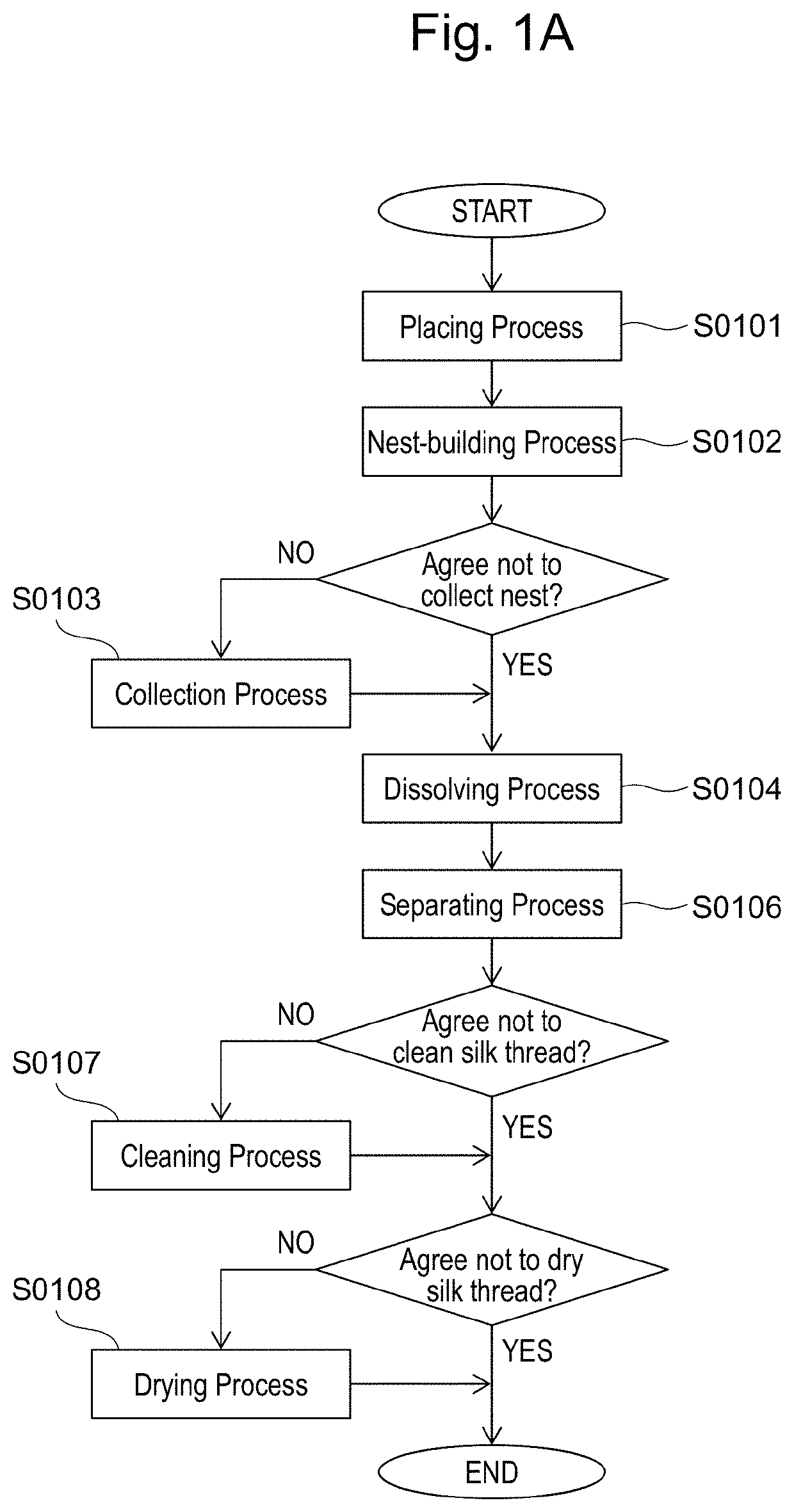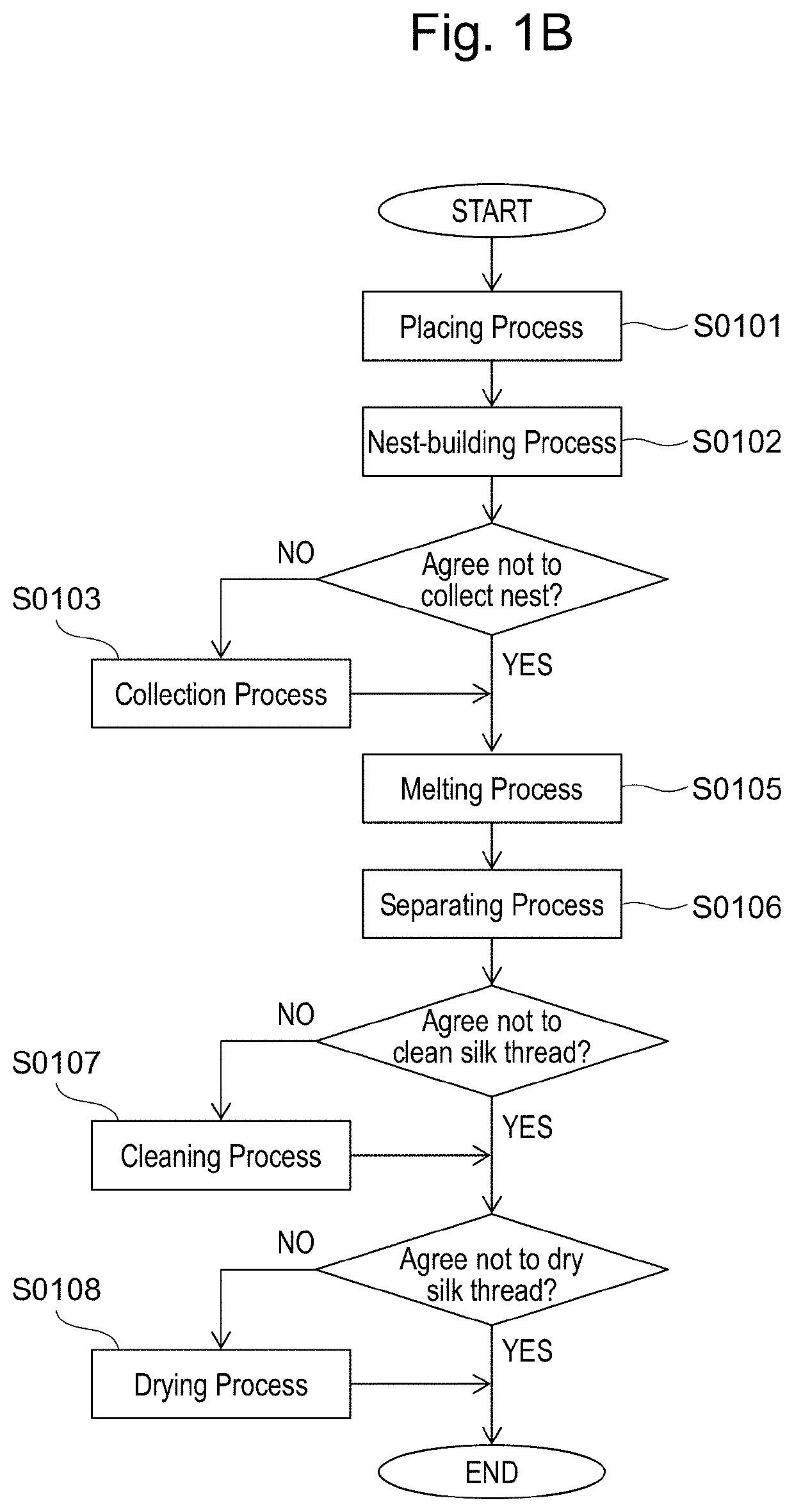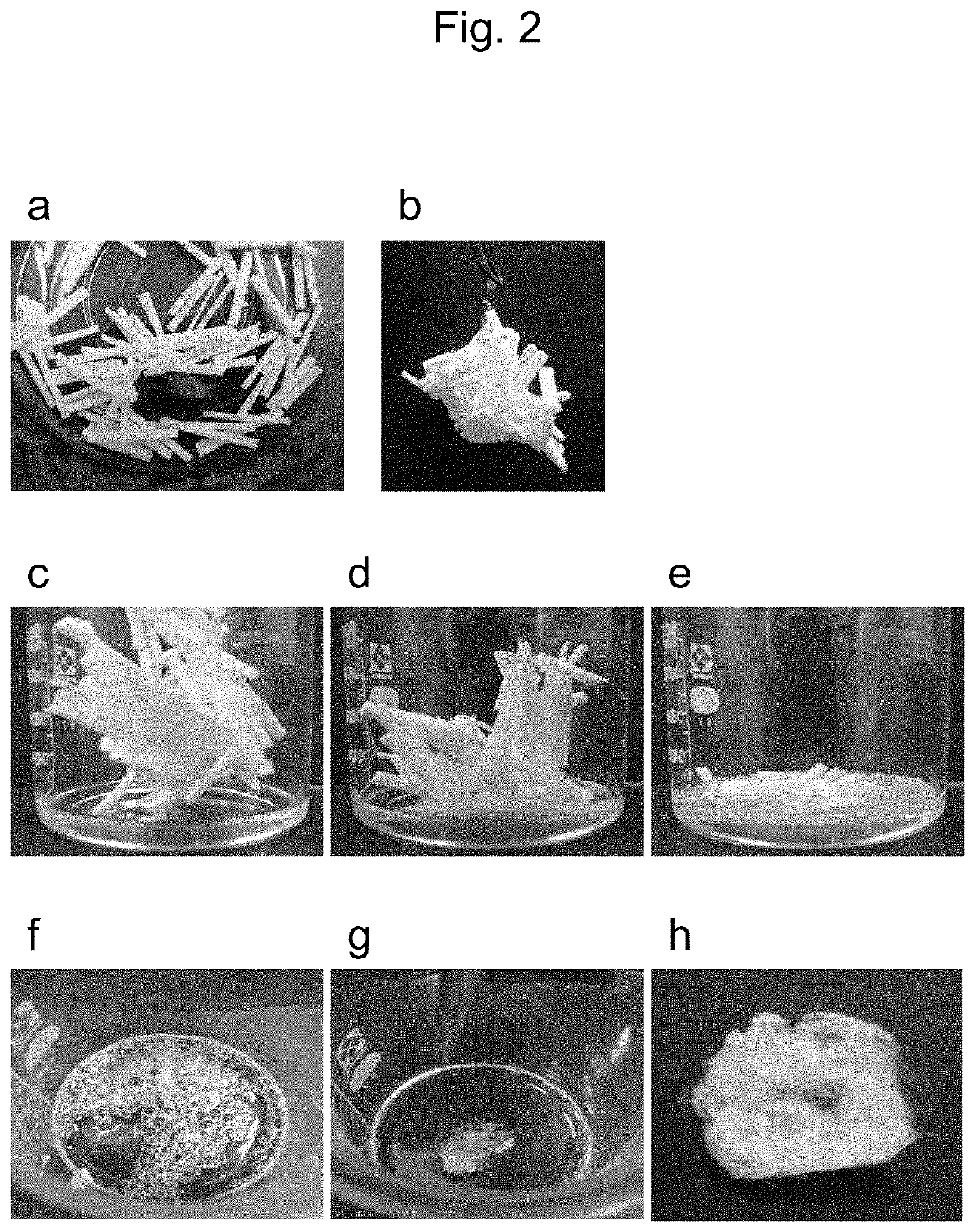Bagworm silk thread collecting method
a bagworm and silk thread technology, applied in the field of collecting silk thread, can solve the problems of inevitably attached leaves and twigs, several problems to be solved, and the value and cost of silkworm silk thread is high, and achieve the effect of short tim
- Summary
- Abstract
- Description
- Claims
- Application Information
AI Technical Summary
Benefits of technology
Problems solved by technology
Method used
Image
Examples
example 1
Method (1) of Collecting Bagworm Silk Thread
(Purpose)
[0144]A bagworm nest is produced by a naked bagworm using a low-polarity solvent-soluble nest material, further followed by collecting bagworm silk thread from the nest.
(Method and Result)
[0145]As the bagworm, the last instar larva of Eumeta minuscula collected at an orchard in Tsukuba, Ibaraki, Japan was used. A sufficient amount of a leaf of broadleaf tree was fed to the collected bagworm for three days. The bagworm was allowed to defecate under fasting state for one day, and then taken out of the bagworm nest using scissors.
[0146]FIG. 2 shows a method of collecting threads according to the present invention. On the bottom of a 100 mL glass beaker, thin pieces of styrene foam (polystyrene) prepared into 20 mm to 25 mm length of thin rods were spread as a low-polarity solvent-soluble nest material, then the beaker was placed in a transparent plastic case. The naked bagworm (a full length of 20 mm) taken out of the nest was placed...
example 2
Method (2) of Collecting Bagworm Silk Thread
(Purpose)
[0149]A bagworm nest is produced by a naked bagworm using a water-soluble nest material, further followed by collecting bagworm silk thread from the nest.
(Method and Result)
[0150]As the bagworm, similarly to Example 1, the last instar larva of Eumeta japonica collected at an orchard in Fuji, Shizuoka was used. The basic operation was carried out as in Example 1.
[0151]FIG. 3 shows a method of collecting according to the present invention. On the bottom of a 500 mL glass beaker, gelatin-made hard capsule (experimental gelatin capsule, TORPAC Inc.) shredded into 9 mm to 20 mm thin small pieces was spread as a water-soluble nest material. The naked bagworm (a full length of 20 mm) taken out of the nest was placed on the small pieces of gelatin in the beaker, and left at atmospheric pressure at 25° C. (a). After three days, a bagworm nest (b) newly produced using the small pieces of gelatin as a nest material was collected. The bagworm...
example 3
Method (3) of Collecting Bagworm Silk Thread
(Purpose)
[0154]A bagworm nest is produced by a naked bagworm using a thermally meltable nest material, further followed by collecting bagworm silk thread from the nest.
(Method and Results)
[0155]As the bagworm, similarly to Example 1, the last instar larva of Eumeta minuscula collected at an orchard in Tsukuba, Ibaraki, Japan was used. The basic operation for preparing a naked bagworm was carried out as in Example 1.
[0156]FIG. 4 shows a method of collecting according to the present invention. On the bottom of a 100 mL glass beaker, beeswax (manufactured by Yamada Bee Company, Inc.) prepared into 10 to 20 mm length of thin small pieces and 10 mm to 20 mm length of thin rods were spread as a thermally meltable nest material, then the beaker was placed on a transparent plastic case so that light could also come in through the bottom of the beaker. The naked bagworm (a full length of 25 mm) taken out of the nest was placed on the small pieces o...
PUM
| Property | Measurement | Unit |
|---|---|---|
| Length | aaaaa | aaaaa |
| Polarity | aaaaa | aaaaa |
| Solubility (mass) | aaaaa | aaaaa |
Abstract
Description
Claims
Application Information
 Login to View More
Login to View More - R&D
- Intellectual Property
- Life Sciences
- Materials
- Tech Scout
- Unparalleled Data Quality
- Higher Quality Content
- 60% Fewer Hallucinations
Browse by: Latest US Patents, China's latest patents, Technical Efficacy Thesaurus, Application Domain, Technology Topic, Popular Technical Reports.
© 2025 PatSnap. All rights reserved.Legal|Privacy policy|Modern Slavery Act Transparency Statement|Sitemap|About US| Contact US: help@patsnap.com



